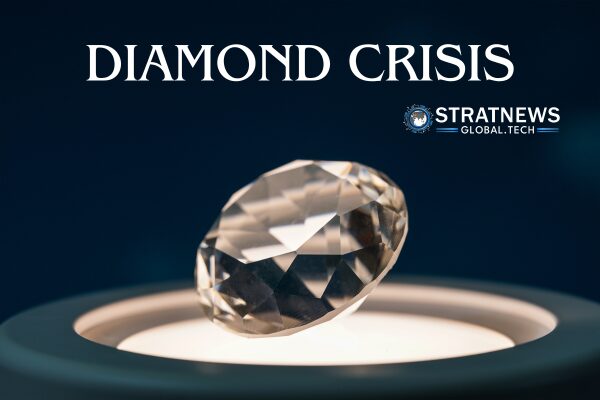World’s largest office complex sees little activity amid weak global demand
The Surat Diamond Bourse, inaugurated less than a year ago as the world’s largest office complex, was meant to symbolise India’s growing global trade ambitions. Instead, its gleaming glass towers are eerily quiet. Of the 4,700 offices sold in the sprawling hub, fewer than 250 are in use.
The reason is a sharp slowdown in India’s diamond trade. Exports have slumped to a two-decade low, hit by weak Chinese demand. Now, higher tariffs imposed by the United States — India’s biggest market — are threatening to push the industry into deeper crisis.
The U.S., which buys nearly one-third of India’s $28.5 billion annual diamond and jewellery exports, will soon double tariffs on Indian gems to 50%. The change is set to take effect on 27 August, further shaking buyer confidence.
Industry braces for U.S. tariff shock
In Surat, where more than 80% of the world’s rough diamonds are cut and polished, orders are already drying up. Many exporters fear massive losses once the higher tariffs take hold.
Dharmanandan Diamonds’ managing director Hitesh Patel expects revenues to fall by 20–25%. He said the company is considering shifting production to Botswana, where U.S. tariffs remain at a lower 15%.
Smaller exporters have fewer options. Many are cutting working days and reducing staff. “Demand has slumped so badly that the diamond packets I sold for 25,000 rupees ($285) last year now fetch only 18,000,” said Surat-based trader Shailesh Mangukiya, who has halved his workforce to 125.
The Gem and Jewellery Export Promotion Council (GJEPC) warns that between 150,000 and 200,000 jobs could be lost if no trade relief is agreed. U.S. buyers are already looking to source from countries like Israel, Belgium and Botswana.
Symbol of ambition faces uncertain future
When Prime Minister Narendra Modi inaugurated the 6.7 million square-foot bourse in December 2023, he called it a symbol of “new India’s strength and resolve.” The complex, larger than the Pentagon, houses banks, customs offices, vaults and a jewellery mall, designed as a one-stop hub for the global diamond trade.
But with demand at historic lows, many firms are rethinking plans to move in. A Mumbai-based exporter who purchased office space last year has already shelved relocation plans, citing both tariffs and business uncertainty.
Searching for new markets amid crisis
Indian exporters are working to increase sales to Asia, Europe and the Middle East. However, industry leaders admit finding new large-scale buyers will be difficult. Many units are cutting purchases of rough diamonds and offering steep discounts to preserve cash flow.
The only bright spot is India’s domestic market. Recently surpassing China as the world’s second-largest consumer of diamonds, India’s demand continues to grow. “American demand has slowed, but strong sales in India are helping offset some of the losses,” said Hitesh Shah of Venus Jewel, a supplier to global luxury brands like Tiffany & Co. and Harry Winston.
For now, India’s diamond city of Surat waits anxiously as tariffs threaten its future. Once envisioned as a hub of glittering global trade, the world’s largest diamond bourse risks becoming a silent monument to economic uncertainty.
with inputs from Reuters


